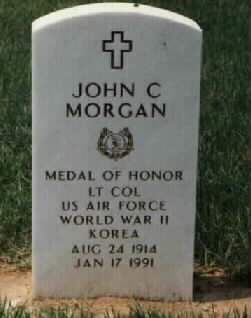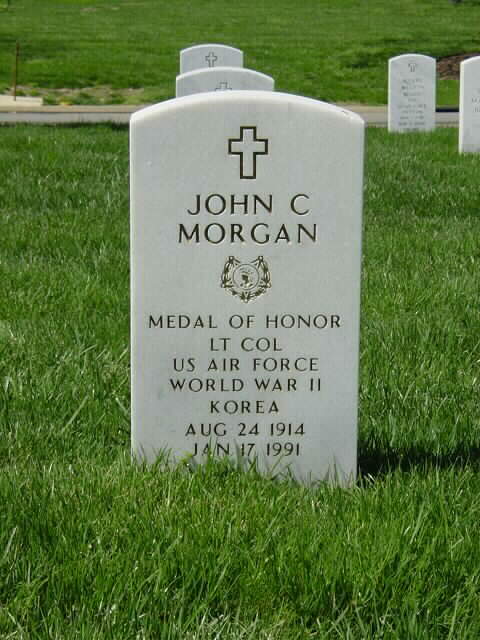A World War II avitor whose actions on a 1943 bombing run over Germany won him the Medal of Honor and helped to inspire “Twelve O’Clock High,” died on January 17, 1991 of a heart attack. The inspiration for Sy Bartlett to write “Twelve O’Clock High,” fame from the bombing mission on July 28, 1943.
Morgan, an Army Air Forces Second Lieutenant, was co-pilot on a B-17 enroute to the raid when the plane was hit by fire from enemy fighter planes. The pilot and top turret gunner were wounded and the waist, tail and radio gunners lost consciousness when their oxygen supplies were cut off by the damage to the plane. For two hours, Morgan had to fight the pilot, who continued to try to fly the plane despite being crazed by a bullet that had split his skull open. The plane’s communications system was knocked out and it was two hours before the navigator entered the cockpit to assist him. He completed the raid and returned to base, saving both the crew and the aircraft.
After leaving the service, he worked for Texaco in California selling aviation fuel.
He is buried in Section 59 of Arlington National Cemetery.
MORGAN, JOHN C. (Air Mission)
Rank and organization: Second Lieutenant, U.S. Army Air Corps, 326th Bomber Squadron, 92d Bomber Group. Place and date: Over Europe, 28 July 1943. Entered service at: London, England. Born: 24 August 1914, Vernon, Texas. G.O. No.: 85, 17 December 1943.
Citation:
For conspicuous gallantry and intrepidity above and beyond the call of duty, while participating on a bombing mission over enemy-occupied continental Europe, 28 July 1943. Prior to reaching the German coast on the way to the target, the B17 airplane in which 2d Lt. Morgan was serving as copilot was attacked by a large force of enemy fighters, during which the oxygen system to the tail, waist, and radio gun positions was knocked out. A frontal attack placed a cannon shell through the windshield, totally shattering it, and the pilot’s skull was split open by a .303 caliber shell, leaving him in a crazed condition. The pilot fell over the steering wheel, tightly clamping his arms around it. 2d Lt. Morgan at once grasped the controls from his side and, by sheer strength, pulled the airplane back into formation despite the frantic struggles of the semiconscious pilot. The interphone had been destroyed, rendering it impossible to call for help. At this time the top turret gunner fell to the floor and down through the hatch with his arm shot off at the shoulder and a gaping wound in his side. The waist, tail, and radio gunners had lost consciousness from lack of oxygen and, hearing no fire from their guns, the copilot believed they had bailed out. The wounded pilot still offered desperate resistance in his crazed attempts to fly the airplane. There remained the prospect of flying to and over the target and back to a friendly base wholly unassisted. In the face of this desperate situation, 2d Lt. Officer Morgan made his decision to continue the flight and protect any members of the crew who might still be in the ship and for 2 hours he flew in formation with one hand at the controls and the other holding off the struggling pilot before the navigator entered the steering compartment and relieved the situation. The miraculous and heroic performance of 2d Lt. Morgan on this occasion resulted in the successful completion of a vital bombing mission and the safe return of his airplane and crew.
Michael Robert Patterson was born in Arlington and is the son of a former officer of the US Army. So it was no wonder that sooner or later his interests drew him to American history and especially to American military history. Many of his articles can be found on renowned portals like the New York Times, Washingtonpost or Wikipedia.
Reviewed by: Michael Howard


